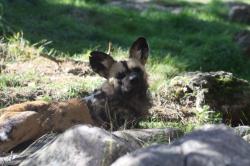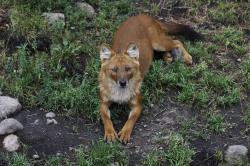Background

There is not much known about the volatiles that comprise the odor of blood in mammals or about the components of blood odor that elicit behavioral responses in predators and/or prey species. Recent studies identified the odorant trans-4,5-epoxy-(E)-2-decenal as a volatile component in mammalian blood and in meat. Interestingly, humans have a low detection threshold of 0.078 ppt – 0.33 ppt (parts per trillion) for this particular odorant and it has been described to evoke a typical “metallic, blood-like” odor quality in humans.
It is known that the sense of smell is well developed in the Canidae family and that they rely on their sense of smell for intra- and interspecific communication as well as for detecting and locating prey. Trained domestic dogs (Canis familiaris) are able to discriminate between the odor of blood from healthy humans and the odor of blood from patients with ovarian carcinoma. This indicates that dogs can respond to the odor of certain components in blood and not only to the odor of whole blood.
The two canine species Dholes (Cuon alpinus) and African wild dogs (Lycaon pictus) strongly rely on their sense of smell in a variety of contexts. Therefore it seems reasonable to assume that olfactory stimuli can be an efficient way of enriching the captive environment of the two canine species. The use of odors as enrichment for captive carnivores has shown to be successful in increasing the level of activity in captive felids. The use of odors as enrichment for captive canids has been studied to a lesser extent, with the exception of laboratory and kennel-housed domestic dogs.
Aim

The aim of the study was:
- to assess behavioral responses of two canine species, African wild dogs (Lycaon pictus) and dholes (Cuon alpinus) kept at Kolmården Wildlife Park, to mammalian blood and the mammalian blood odor component trans-4,5-epoxy-(E)-2-decenal
- to compare their behavioral responses to those towards a fruity control odorant and an odorless control
- to assess the suitability of the odor stimuli as environmental enrichment for captive African wild dogs and dholes.
Responsible for this page:
Director of undergraduate studies Biology
Last updated:
06/09/14
